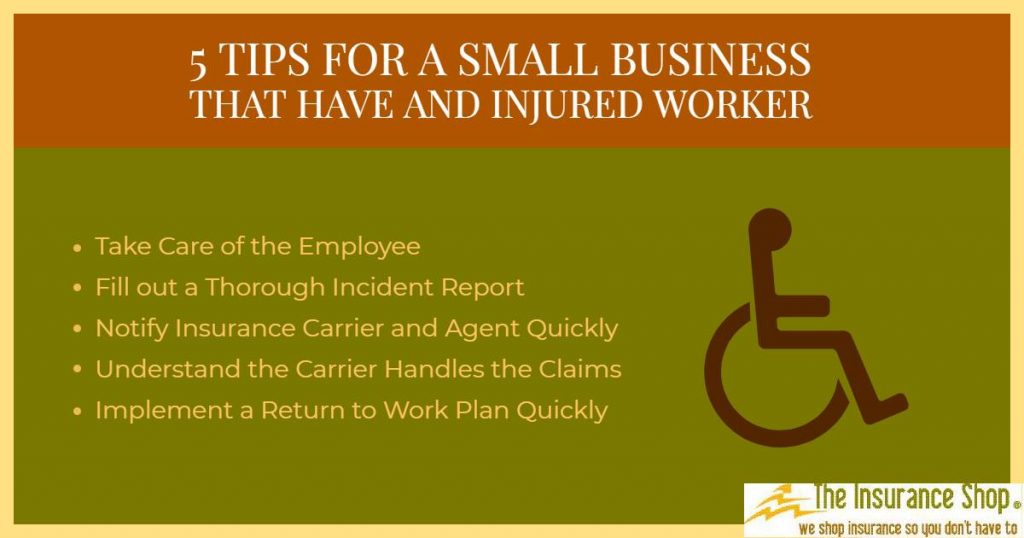4 ways employers can improve health outcomes of an injured worker
Take care of your employee
When an injury occurs to one of your workers, taking care of the health and well-being of that worker should always be the first and foremost priority for everyone in your organization. This is simply the right thing to do. It will help your business show the injured worker that you do truly care about them and it will send a nonverbal message to your other workers that you care about them as well. Implementing a return to work program will help them quickly feel like they are still a part of the organization and valued. These little things can go a long way to turning a bad situation in to a positive for your organization.
Report the injury promptly
As you are taking care of the injured worker there should be some process in place for your managers to begin to document what exactly happened and when. One thing to remind managers to document is the time the accident happened, who was present, how the incident happened and what was being done about the injury. A decision on whether or not to call an ambulance needs to be quickly and decisively.
Stay in touch with your adjuster
In the days and weeks after an incident it is crucially important to keep both your agent and your carrier in the loop. Your agent will not be able to deal with the claim very well, that is the responsibility of the carrier. It is important to inform them, because if you have a problem with your carrier, they can speak with them on your behalf about how the claim is being processed. It is important to notify the carrier quickly because they know the ins and outs of the workers compensation system in your area. They can tell you which hospital or doctors office is best set up to handle a workers compensation claims. For the hospital, processing a workers compensation claim is not a simple as just going to the doctor. If you go to the correct system it can speed up the timing and the quality of care your injured employee gets.
Rely on us for medical bill mediation
If you are having problems with a claim getting paid, do not pay the bill yourself. The carrier has a separate relationship with hospitals and they can negotiate prices to help your business and the workers compensation system as a whole. Not all hospitals know the workers compensation system well. They may bill the business instead of the insurance carrier and not realize how the process operates. This should not be the case, but unfortunately in some cases it does occur. Any bill that you get should be turned over to your carrier and it is a good idea to make a copy and keep your agent in the loop.


